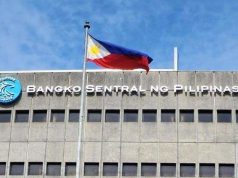MANILA – Sen. Sherwin T. Gatchalian said the most pressing interventions to address inflation involve the removal of the quantitative restrictions (QR) regime on rice, as well as a national ID system, which will make it easier for poor citizens to avail themselves of food and fare discounts.
“Right now, the immediate need is the removal of quantitative restrictions on rice. Another measure is the approval of the National ID system to identify who among the poor need the discounts (on rice and on transport fares),” he told reporters after Monday’s Senate hearing on inflation.
Mr. Gatchalian has raised concerns over rising food prices after inflation hit 4% in January, following a 4.5% price increase in food and non-alcoholic beverages.
At the hearing, Claire Dennis S. Mapa, Dean of the University of the Philippines School of Statistics (UPSS), pointed out that the poorest Filipino families spent more on food, especially rice, citing data from the Philippine Statistics Authority (PSA) on the inflation in the price of goods on which the poorest segments of the population depend.
National Economic Development Authority (NEDA) undersecretary for policy and planning Rosemarie G. Edillon concurred that removing the quantitative restriction regime on rice will reduce the retail price of the commodity.
“If we have a more liberalized trade regime with respect to rice — meaning we’re talking about the tariffication of rice — then our idea there is you take out the policy uncertainty in the rice market,” she said.
“And with the tariffication, the revenues can be plowed back to the sector in terms of very intensive agricultural development programs. And this will actually stabilize not just the rice but also the other food products in the market,” she added.
NEDA Director-General Ernesto M. Pernia also pushed for the lifting of the QR on rice to increase the purchasing power of households, especially the poor.
He added that the increased price of rice was also related to the “disorganization” at the National Food Authority (NFA), which is failing to maintain its mandated buffer stock levels.
“The NFA seems to have been in disarray and we need to do something about the way NFA handles this buffer system to make sure that there’s no spike in the price of rice,” he said.
INSUFFICIENT SAFETY NETS
Meanwhile, Mr. Mapa added that the safety nets for the poor in the form of cash transfers provided by the Tax Reform Acceleration and Inclusion (TRAIN) law are insufficient to offset increased prices, based on his estimates.
Mr. Gatchalian said the government could look into “non-revenue measures” to address the insufficiency of the cash transfers, including the proposed national ID system in order to better identify those entitled to the mitigating measures under the TRAIN law.
“The national ID system is also very important because this is where we are going to be releasing the targeted subsidies such as the discounts on transportation fares and rice,” he said.
Finance Undersecretary Karl Kendrick T. Chua said the DoF has yet to implement the TRAIN law’s social benefit programs, such as the 10% discount on fares and NFA rice, pending the passage of the national ID system.
Aside from conditional cash transfers and the discounts, the TRAIN law also entitles beneficiaries to free free skills training from the Technical Skills and Development Authority (TESDA).










